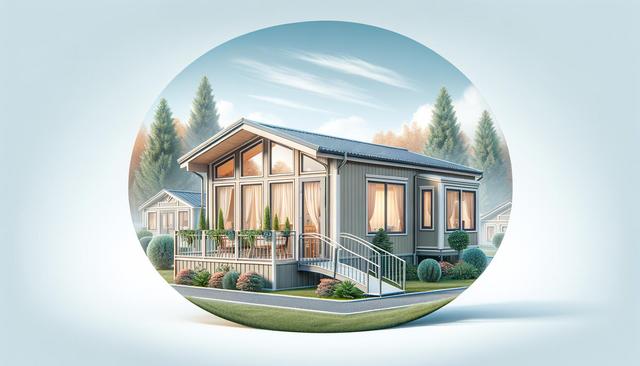Why Modular Homes Appeal to Seniors
Modular homes offer a unique blend of convenience, customization, and cost-efficiency, making them an increasingly popular choice among seniors. Unlike traditional site-built houses, modular homes are constructed in sections at a factory and then assembled on-site. This controlled environment ensures high-quality standards and often reduces construction delays or weather-related issues. For seniors looking to downsize or simplify their living arrangements, modular homes provide a manageable, accessible solution. Key advantages include:
- Faster construction times
- Lower labor and material costs
- Customizable layouts to accommodate mobility needs
- Energy-efficient designs that reduce utility expenses
Moreover, many modular homes can be adapted to include features such as wider doorways, walk-in showers, and single-level floor plans, which support aging in place. These features align well with the needs of seniors who value both independence and safety in their living environments.
Types of Modular Homes for Senior Living
There are several types of modular homes that cater specifically to senior living. The choice often depends on lifestyle preferences, budget, and whether the senior plans to live independently or within a community setting. Common modular home styles for seniors include:
- Single-story ranch-style homes
- Park model homes in 55+ communities
- Accessory dwelling units (ADUs) placed on family property
- Duplexes or semi-detached units in modular retirement villages
These housing types allow for flexibility in location, whether it’s staying close to family or joining a senior-focused community. ADUs, in particular, have gained attention as a way for older adults to live near family while maintaining personal space and privacy. Retirement communities with modular homes often provide additional services such as transportation, meal plans, and recreational activities, enhancing the overall quality of life.
Design Considerations for Aging in Place
When choosing or customizing a modular home for senior living, it’s important to consider features that support aging in place. This concept focuses on allowing seniors to live safely and comfortably in their own homes for as long as possible. Modular homes can be designed with a wide range of accessibility-focused features, such as:
- No-step entries and ramps
- Lever-style door handles
- Non-slip flooring surfaces
- Lowered countertops and light switches
- Bathroom grab bars and seated showers
Incorporating these features at the design stage ensures that the home remains functional as physical needs evolve. Open floor plans also enhance mobility and allow for easy navigation with walkers or wheelchairs. Smart home technology, like voice-activated lighting and security systems, can further improve convenience and safety, helping seniors maintain independence with minimal assistance.
Financial Benefits and Affordability
Affordability is a key consideration for many seniors, especially those on fixed incomes. Modular homes generally offer a more economical option compared to traditional housing, thanks to shorter build times and efficient use of materials. Additionally, financing options are often available, including personal loans, reverse mortgages, and in some cases, housing assistance programs for older adults. Some of the financial advantages include:
- Lower upfront costs
- Reduced maintenance expenses
- Energy-efficient systems that cut monthly utility bills
Ownership of a modular home also provides long-term cost savings, particularly when compared to extended stays in assisted living facilities. For those who plan to age in place, the investment can be more sustainable over time. Furthermore, the resale value of well-maintained modular homes has improved, making them a viable asset for seniors and their families.
Community and Lifestyle Considerations
Beyond the physical structure, the environment and community surrounding a modular home play a significant role in a senior’s quality of life. Many modular home developments are designed with older adults in mind, offering social interaction, security, and convenient access to healthcare and essential services. These communities often include:
- Shared amenities like clubhouses and fitness rooms
- Organized social activities and clubs
- On-site management or support staff
- Proximity to medical centers and shopping areas
For seniors who value social engagement and a sense of belonging, these communities provide a supportive network that can enrich daily life. Additionally, living in a senior-focused setting often reduces feelings of isolation and promotes mental and emotional well-being. Whether choosing to live independently or within a retirement community, modular homes allow seniors to maintain a fulfilling and active lifestyle.
Conclusion: A Flexible Solution for Senior Independence
Modular homes offer a well-rounded housing solution for seniors who seek independence, affordability, and adaptability. With thoughtful design and community options, they cater to the evolving needs of older adults while supporting a high quality of life. As the senior population grows, modular living continues to stand out as a practical and appealing choice for aging with dignity and comfort.


